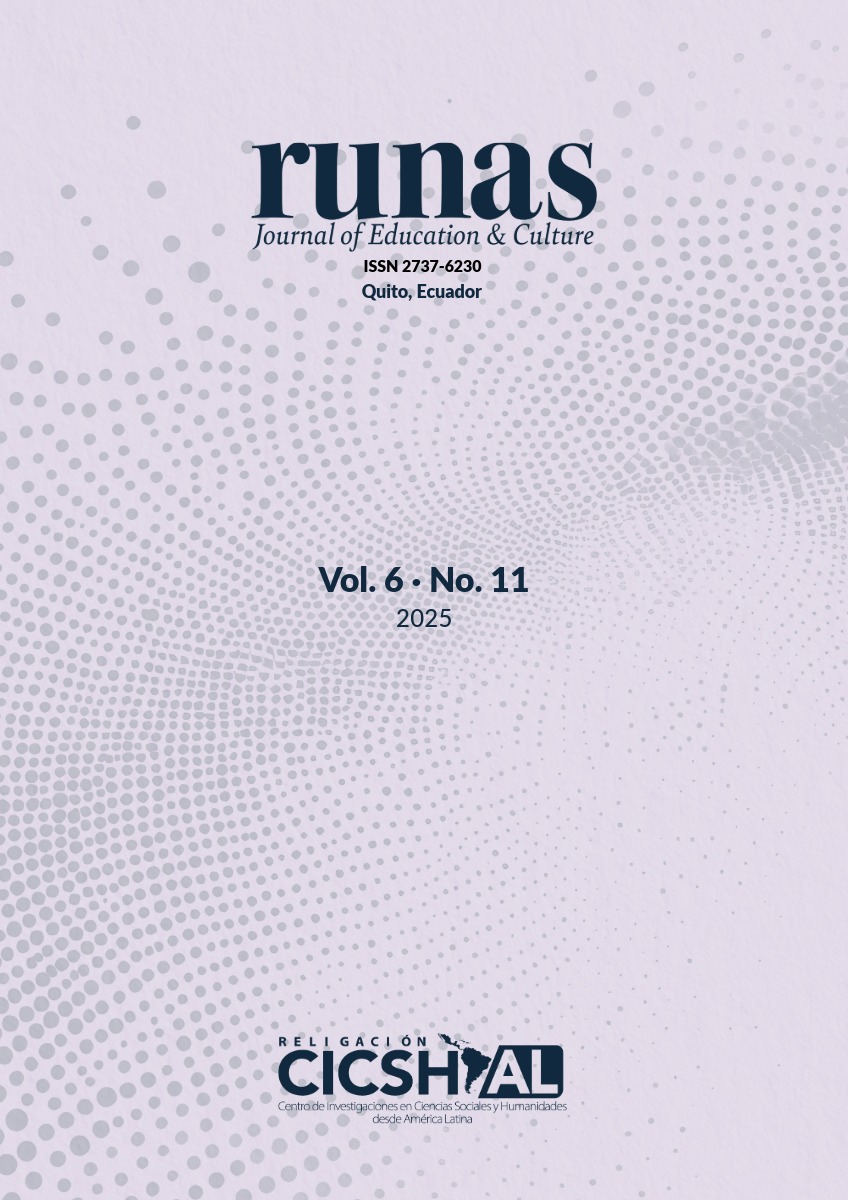Abstract
In Ecuador, students often lack motivation to learn English since effective strategies are not used to develop speaking skills while promoting interaction, participation, creativity, fluency, and correct pronunciation of words or sentence development. The general objective of the research is to analyze the effectiveness of mime as a strategy to improve speaking skills in the English as a foreign language classroom. Through mime, students feel comfortable relating vocabulary or phrases with gestures, mimicry, and imitating sounds, which will be easy to remember to perform activities with more self-confidence. Through the analysis of the state of the art and previous studies, the various ways in which mime as a strategy can improve speaking skills and promote a connection between words and body language are explored. The study was conducted with a quantitative methodology. A descriptive and explanatory approach was used. The research sample involved 29 children from the seventh year of Santo Domingo de Guzmán High School. The instruments applied before, during, and after the research revealed that a significant percentage improved their fluency and pronunciation skills while developing creativity, verbal expression, and body language. The rest of the students master this strategy, which suggests that mimicry and pedagogical strategies should be used more frequently to ensure total progress in fluency and pronunciation, contributing considerably to the students' gestures and body expression. In conclusion, this study highlights the importance of expanding vocabulary and meaningful sentence construction through gestures, mimes, and body language to improve fluency and pronunciation by promoting active participation and interaction of all students in English classes.
References
Afifah, N., Sunarto, S., Fauzi, Moh. F., Anindiati, I., & Nurdianto, T. (2020). The Implementation of Mimicry Memorization Method for Novice Students in Learning Arabic Mufradat. Jurnal Al Bayan: Jurnal Jurusan Pendidikan Bahasa Arab, 12(2), 263-280. https://doi.org/10.24042/albayan.v12i2.5953
Alvarez, C., Tamayo, M., & Coutinho, J. (2024). Factors influencing the development of speaking skills among Ecuadorian EFL learners: Teachers’ perspectives. Indonesian Journal of Applied Linguistics, 14(2). https://doi.org/10.17509/ijal.v14i2.74889
Battigalli, P., & Tebaldi, P. (2019). Interactive epistemology in simple dynamic games with a continuum of strategies. Economic Theory, 68(3), 737-763. https://doi.org/10.1007/s00199-018-1142-8
Damayanti, D., & Ammar, F. M. (2024). Revolutionizing Arabic Vocabulary Learning with Mimicry Memorization. Indonesian Journal of Islamic Studies, 11(4). https://doi.org/10.21070/ijis.v11i4.1725
Dina, A., Afrianto, A., Samanik, S., Suprayogi, S., Pranoto, B. E., & Gulo, I. (2022). Improving Publlic Speaking Ability through Speech. Journal of Social Sciences and Technology for Community Service (JSSTCS), 3(2), 322. https://doi.org/10.33365/jsstcs.v3i2.2231
Endahati, N. (2020). Improving speaking ability on public speaking class by using role-playing technique of english education department students. Eltics: Journal of English Language Teaching and English Linguistics, 1(1). https://doi.org/10.31316/eltics.v1i1.384
Hafsari, S., Wahyudin, D., Atiatulwafiroh, S., Budiyanto, C., & Wiwaha, R. S. (2024). Mimicry-Memorization Method: Elevating Arabic Speaking Skills with Visual Media. Kalamuna: Jurnal Pendidikan Bahasa Arab dan Kebahasaaraban, 5(1), 1-20. https://doi.org/10.52593/klm.05.1.01
Manoppo, E. C., Rares, H., & Posumah, J. (2021). Improving students’ vocabulary by using mimicry memorization method. Journal of English Language and Literature Teaching, 5(2). https://doi.org/10.36412/jellt.v5i2.2457
Paivio, A. (1986). Mental images and memory: Towards an explanation of the concreteness effect. Cognitiva, 6(1), 3-26.
Shan, S., Cryan, J., Wenger, E., Zheng, H., Hanocka, R., & Zhao, B. Y. (2023). Glaze: Protecting Artists from Style Mimicry by Text-to-Image Models. ArXiv, (123). https://doi.org/10.48550/ARXIV.2302.04222
Subagya, A. R. (2023). The effectiveness of the Mim-Mem (Mimicry Memorization) method in improving efl students’ pronunciation: A pre-experimental study. UIN Sunan Gunung Djati Bandung. https://digilib.uinsgd.ac.id/75489/
Vettori, G., Bigozzi, L., Incognito, O., & Pinto, A. G. (2024). Relationship between oral narrative and vocabulary skills among bilingual language-minority children and their monolingual peers in primary school. International Journal of Bilingualism, 28(6), 1182-1199. https://doi.org/10.1177/13670069221089064
Villacrés, M. A., & Solis, A. A. (2023). Mimicry as a Strategy to Improve English Language Vocabulary in the EFL Classroom: La mímica como estrategia para mejorar el vocabulario del idioma inglés como lengua extranjera en aula. LATAM Revista Latinoamericana de Ciencias Sociales y Humanidades, 4(1). https://doi.org/10.56712/latam.v4i1.533
Vu, D. V., & Peters, E. (2021). Vocabulary in English Language Learning, Teaching, and Testing in Vietnam: A Review. Education Sciences, 11(9). https://doi.org/10.3390/educsci11090563
Vygotsky, L. (1978). Learning Theories for Early Years Practice. Torrosa.
Yuldoshevna, N. (2021). How to improve the ability of listening and speaking skills in the course of communications by innovation technologies. An International Multidiciplinary Research Journal, 11(1).

This work is licensed under a Creative Commons Attribution-NonCommercial-NoDerivatives 4.0 International License.
Copyright (c) 2025 Victoria Maricela Parra Martínez, María Augusta Villacrés Camino





